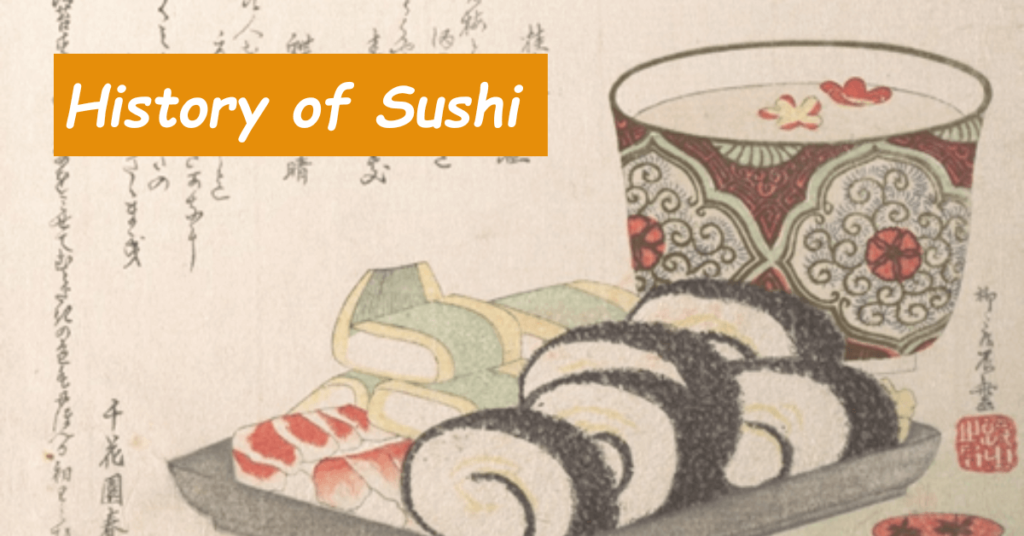Once upon a time, in the distant past of ancient China, a tale began to unfold, tracing back nearly 2000 years. While sushi as we know it wasn’t being crafted, there was a fascinating method in place for preserving fish. They would encase fish in rice to preserve its freshness. It certainly seems like a clever ruse, doesn’t it? But here’s the unexpected turn: they would discard the rice and feast on the fish instead. The rice served merely as a vessel! Let’s delve into the concept of “discarding the carbs.” It’s a fascinating journey that many embark on, exploring the reasons behind this choice and the impact it has on their lives. The narrative unfolds with personal experiences, challenges faced, and the transformations that occur along the way. Each step taken in this process reveals insights and lessons learned, making it a compelling tale of change and discovery. Sushi had transformed into something akin to an ancient refrigerator, all wrapped up in rice.
In the 8th century, the Japanese adopted this technique, combining rice with fish while allowing the rice to continue fermenting. Now, wait a moment—this was not the vibrant, zesty sushi rice we are familiar with today. Not at all! This rice had a pickled twist, leaving you to ponder whether a waiver might be necessary before taking a bite. Zoom ahead to the 18th century, and behold! Once upon a time, there was a man named Hanaya Yohei who made a bold choice to skip the fermentation process entirely, opting instead to present the fish in its freshest form alongside vinegary rice. And just like that, modern sushi came to life!
Let’s take a moment to reflect on this. In Japan, sushi emerged as a captivating art form—a luxurious feast reserved for emperors and those willing to splurge on fish that journeyed thousands of miles to grace their plates. Yet, the path sushi took to achieve its fame was anything but smooth. It required several centuries of persuasion to get people on board with the notion that “raw fish with rice” was a delightful concept. It’s quite fascinating how some folks viewed sushi with the same bewilderment as they did the idea of pineapple topping a pizza. Yet, it proved successful.
Alright, let’s pick up the pace because our tale is about to reach a worldwide audience!
When sushi arrived in the UK during the 1980s, it was akin to that intriguing, enigmatic guest who captivates everyone at a dinner party. Initially, the Brits found themselves in a state of uncertainty. Uncooked seafood? Vinegar-infused rice? It felt like a playful challenge of “identify the unusual cuisine.” But sushi was quite the clever one. It burst onto the scene in London, and in an instant, the British were taken aback, exclaiming, “Hold on, this is actually… rather delightful!” It wasn’t limited to just the upscale Japanese dining establishments. Oh no, sushi has spread everywhere! It began to appear in grocery stores, lining the shelves of supermarkets, and—get ready for it—on conveyor belts at all-you-can-eat establishments. Sushi conveyor belts are truly a dream come true for those who appreciate convenience and indulgence. Simply unwind and let the sushi find its way to you. No effort required!
The British certainly put their own spin on sushi, much like they do with many other culinary traditions. They began to experiment with it, dubbing it “fusion.” And thus, the California roll emerged—not hailing from California, I should note, but rather from the kitchens of Japanese-American restaurants. In a delightful twist of culinary creativity, the Brits embraced sushi, infusing it with their own local flavours such as smoked salmon and cream cheese. Indeed, it’s true—sushi infused with a touch of British charm. Sushi emerged as the sophisticated relative at the family BBQ: refined, yet unexpectedly approachable.
Today, sushi has woven itself into the very fabric of life in the UK, appearing in countless places. Sushi can be found in supermarkets, pop-up restaurants, and even your neighbourhood pub (well, not quite, but it wouldn’t be shocking). But wait, there’s more! It has transcended the exclusive domain of the elite adorned in monocles and top hats. Once a delicacy reserved for the few, sushi has now opened its doors to all! It’s as familiar as fish and chips, yet far less prone to becoming a soggy disaster.
So, what’s the lesson behind this intriguing narrative? Sushi’s journey is quite remarkable, transforming from an unconventional method of preserving fish into a prestigious Japanese delicacy, then evolving into a global culinary phenomenon. Today, it’s savoured even in places where the mere thought of “raw fish? No thanks!” once prevailed. Sushi has become the star of the show, and even the UK can’t resist joining in on the fun. Truly.

